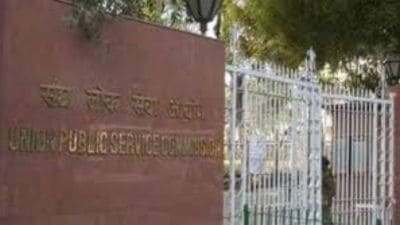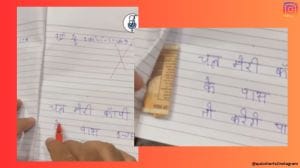- India
- International
Delhi water supply: At colonies that saw pilot project, building trust took some time
MNWS officials also tried to disconnect supply to the water network in Hauz Rani, Kumhar Basti, Said-ul-Ajab and other areas due to illegal tappings, but faced a lot of resistance from the public against it.
 Many homes currently have underground reservoirs, from where water is pumped up to overhead tanks. (Archive)
Many homes currently have underground reservoirs, from where water is pumped up to overhead tanks. (Archive)
In the two south Delhi colonies, which were the first in the city to get 24-hour water supply in the city in March 2017, the biggest challenge has been curtailing wastage. The second is bridging a trust deficit.
When the project was about to be implemented, RWAs in Navjivan Vihar and Geetanjali Enclave held consultations with residents about it. “They refused to believe that water can be supplied 24 hours, because our supply until then was pretty bad. It was very hard to convince them,” said Dr Ruby Makhija, secretary of the Navjivan Vihar RWA.
The Malviya Nagar Water Services (MNWS), a public-private partnership between the Delhi Jal Board (DJB) and a French company called Suez, laid new pipelines in the area and initially switched a few houses to the new system. After seeing the response, more houses were included.
Ajay Saxena, assistant vice-president of projects at Suez India, said the biggest challenge they faced was to convince people to bypass, or not use, the underground reservoirs below their homes, from where water is pumped up to an overhead tank and then taken into taps for use.
“The tanks were old and had leakages because many were not made out of reinforced concrete. If you pump water into them continuously, it would percolate into the ground and the water tank would never fill up,” he said.

Saxena added that as the system became functional, the initial demand of water almost doubled. This was because water would leak from the underground tanks. As a result, water bills, too, almost came to tens of thousands of rupees. Some also complained of the water pressure being poor for the first few days.
After these glitches were overcome, residents said the supply became “fantastic”. Gagan Adlakha (53), who has lived in Navjivan Vihar for over 30 years, said, “Earlier, we had to wake up early to fill water. Whether it would come or not would always be on our mind.”
Some apprehensions still remain over the project as most residents have not taken direct tap connections to the water line and, instead, still get it supplied to the underground reservoirs and overhead tanks. Adlakha said he is not completely sure if he can do without an underground reservoir in a new house he’s building in the colony.
“Trust builds slowly. We’re getting 24-hour supply right now, but what if we don’t tomorrow? We are used to the system we have because of decades of not getting water properly,” he said. Some fear that if the ruling party changes in the upcoming Assembly elections, the project may be rolled back.
The MNWS’s command area is spread over 14 square kilometres and caters to a population of approximately 4.32 lakh people. While infrastructure for switching this entire area to 24-hour water supply is already in place, the only thing lacking is availability of water.
Saxena said the MNWS receives around 65 million litres per day (MLD) of water at present, but needs around 80 MLD in total to serve water for 24 hours in the entire command area.
Officials said some assurances have been given by the DJB to augment the water supplied to the MNWS. If it goes ahead as per plan, Saket area in south Delhi may be the next to get 24-hour water supply in around a month followed by Shivalik Colony in Malviya Nagar.
Dealing with unauthorised connections, however, still remains a challenge. The percentage of metered connections has risen from 27% in 2011 to 98% in 2019, but not beyond as people in a few rural areas have refused to install the meters, Saxena said.
MNWS officials also tried to disconnect supply to the water network in Hauz Rani, Kumhar Basti, Said-ul-Ajab and other areas due to illegal tappings, but faced a lot of resistance from the public against it.
Brijlal Kshatriya (83), a resident of Navjivan Vihar, said the next step is to drink water directly from the tap, which would take time. Dr Makhija said, “Some people have switched from RO to UV filters, but the internal pipes in houses may still be very old. And we still use the overhead tanks. So until this is changed, we don’t push people.”
She added, “I got the pipes in my house changed and I have one direct connection from the water network to a tap in my kitchen. At times, I don’t mind drinking from it.”
Apr 16: Latest News
- 01
- 02
- 03
- 04
- 05






































